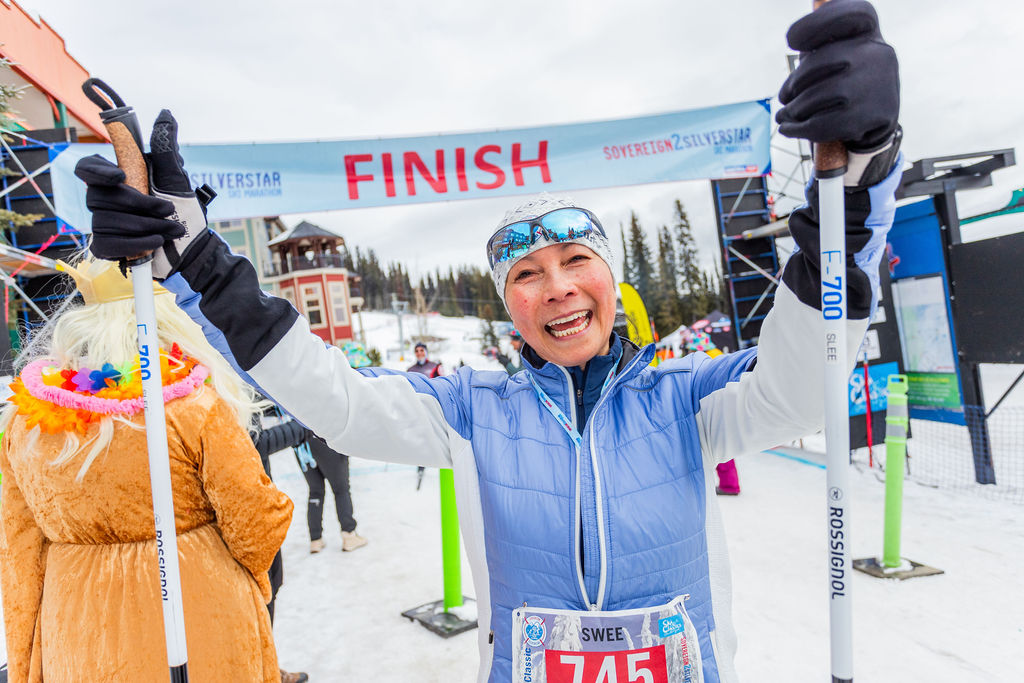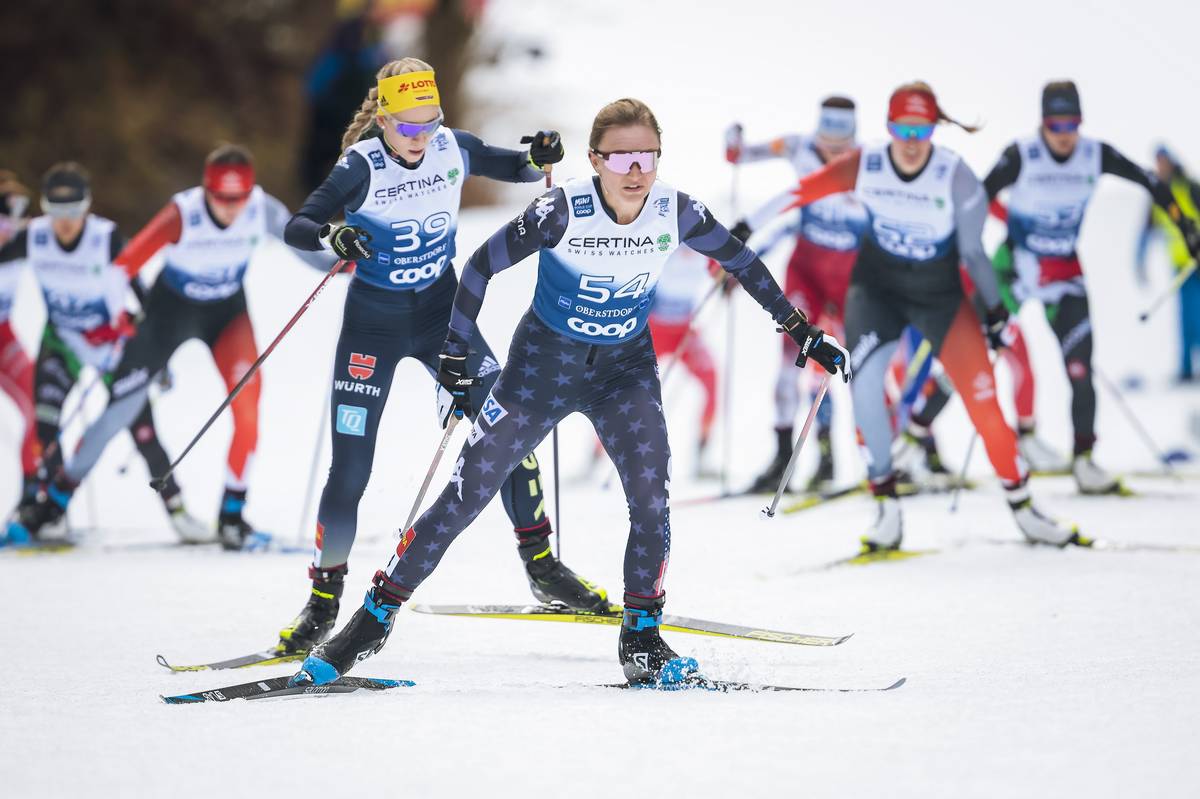This year has included a lot new for me. A new coach… Jacob Beste, a new wax sponsor… Swix, a new race team… Team Birkie and a new charity/head gear sponsor… Team Strong Heart. Also, I have a new ski, boot, and binding sponsor in Fischer.
Thus far I have been tremendously happy with all my “new” Nordic gear and sponsors. Something I feel is worth mentioning in regards to my equipment is binding position and the NNN spacer/wedge. The first chance I had to test my new equipment came in November at the Super Tour races in West Yellowstone, Montana.
Fischer’s Race Service Director Chris Hall had picked many of my skis in Austria, and Gear West owner Brian Knutson and I added a few “Signature” skis from the store as well. I had reviewed all the pairs with my hands/eyes as well as on the Gear West Flex Tester.
Based on that data, I had a good feel about the quality I was working with and what skis were suited for different conditions. Once in West Yellowstone, I was able to do some on-snow ski testing (the best kind of testing) with Chris Hall. We were able to find some real winners, but one thing was bugging me a bit. A few of the pairs that looked phenomenal in my hands and on the flex tester seemed to underperform just a hair.
Since I am now skiing on the NNN Xcelerator system I was able to play with my ski-boot-binding interaction without messing around with screws, glue, and mounting jigs. The Xcelerator system is great because it works in conjunction with skis equipped with a NIS binding plate. The bindings easily and quickly snap into place and the interaction between the boot, binding and ski is very close… giving great ski feel.
I grabbed a few pairs of my skis that seemed to under-perform and moved the binding position around. This took me all of 30 seconds along the side of the trail. To my surprise, on a few of the pairs, shifting the binding 1 or 2 clicks (0.5 to 1cm) backwards made all the difference in the world! I couldn’t believe how some pairs went from good (everything in my bag is good) to exceptional. Testing of binding position involved skiing on a matched pair with each binding set to a different position. I would usually start with one in position “0” and one in position “-2”… at balance and “-1”cm back. Next, I would proceed to ski the pair in a small closed loop that included climbs, flats and descents. I was concentrating on how the ski accelerated, static speed while climbing and top end speed. I would rotate skis on each foot and then adjust binding position until I felt like I honed in on the “Sweet Spot”… the point which had the best speed characteristics.
The interesting thing to note is that some pairs seemed nearly impervious to binding movement and some pairs would have black and white difference in performance.
In the past, when I was skiing on Salomon, I would always mount each pair of skis a little different to try to find the “sweet” spot on a pair of skis. Now, I can adjust things on the fly. A few things to take home;
- I never had any skate skis perform well if I moved the binding forward of balance.
- Most of my skis performed the best at 0, -1 and -2 on the NIS plate (0 to 1cm back).
- This is a little different since I would always mount my Salomon skis 1 to 2.5cm back from balance.
- Moving the binding back always seems to give better static feel (climbing). However, exercise caution! If you are back too far and not on the sweet spot on the ski, you will give away a lot of top end speed.
- Once you find the “sweet” spot on a ski… it seems to remain the same no matter what conditions.
- On classic skis, I always seem to be at 0 or -1. Back can give more speed but usually kick will suffer a bit… I like a lot of kick!





5 comments
freeheel
January 31, 2012 at 12:30 pm
Thanks for the article Matt. Like you I have made a wholesale switch this year to the NNN system and accelerator binding. I LOVE the ability to change the binding position on the fly and have had similar results with the locations. This past weekend during a snowy ski in West Yellowstone I stopped to move my binding back to see if it would improve my glide. My binding was stuck? What had happened is that while waxing my skis with a warmer (softer) wax it had run into the binding track and locked it in place. Once the ski was warm (inside) the wax became pliable and I was able to clean it and adjust at will. I am going to check my bindings before I leave the wax room in the future. hope that helps someone-cheers
standriese@yahoo.com
January 31, 2012 at 2:52 pm
Thanks for the great article, Matt. This strikes me as so valuable that the ski/binding mfg should probably be testing and giving customers some initial direction on how to optimize the performance of thier products. I found myself at a race with RCS S-tracks with wedges and temps were about 10 lower than predicted (0-5 F) with a hard track. I found the S-tracks had a bit better edge with the bindings one click forward. I can’t claim to have been able to test or know how it affected glide. Getting some idea of what characteristics to look for when moving bindings fore/aft would be a great starting point.
highstream
January 31, 2012 at 3:31 pm
Interesting to hear about an elite skier’s experimentation, after playing around myself. I also switched to NNN plate skis this year to be closer to the ski, have a wider support and have the adjustable binding. Also found classic back means less kick and more glide, except with a relatively soft ski (per skier) where it works better. Overall, been very happy with the change.
There is another element to the mix, though, if one wants to get closer to the ski, and that is boot choice. I found that boot sole thickness varies considerably by brand. Measured from ski top to forefoot sole bottom (while clicked in), I found something like ~7mm for Alpina and ~10mm for Madshus to ~12-13mm for Fischer and ~14-15mm for Salomon (from memory, done last year). From that alone, I can see why Alpina boots became so popular on the WC circuit, something I’ve confirmed with their classic boots (unfortunately, Alpina USA brings in few numbers of half sizes in skate boots).
Cloxxki
February 1, 2012 at 5:43 pm
Great read, thanks a lot!!
This article gave me perhaps the best reason ever to seriously contemplate switching to NNN for next skis. I cannot select race ski’s in Austria, so with need to make the best of the pair I happen across.
Q2: Wedges are mentioned. Could you comment on those please, versus no wedges?
Thanks!
gearwestski
February 2, 2012 at 11:38 am
Thanks everyone for the comments! To answer the question about wedges, read this article http://fasterskier.com/2012/01/gear-west-wedges-and-spacers/
Also, it is difficult to move bindings and wedges if excess wax gets on the NIS plate. It is important to keep the sidewalls of the skis clean.
Cloxxki
It is possible to find a great ski that can handle many conditions, email me at liebech@gearwest.com if you are interested.
standriese@yahoo.com
On your question, moving the binding forward will generally increase edge stability and some control. Moving it back will increase static glide while climbing and at slow speed. Move the binding too far back will decrease top-end speed. Also, it is important to note that moving the bindings will change swing-weight and feel of the ski. If you are all the way back you have a lot of ski hanging off the front of your foot. Thankfully Fischer Carbonlite skis have holes in the tip to reduce swing weight (Sorry, I am sponsored by Fischer so forgive my shameless plug).
-Matt Liebsch